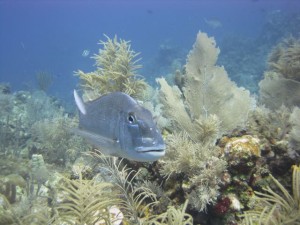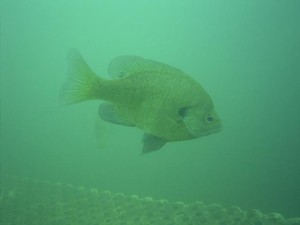Underwater Naturalist

PADI Underwater Naturalist teaches you how to classify invertebrates, vertebrates and plants in the aquatic world.
Underwater Naturalist. The name seems scientific, yet almost leaning towards the scientists of the eighteenth and nineteenth centuries: natural philosophers. And it should sound scientific. The PADI Underwater Naturalist course focuses on objective, scientific observations of the aquatic world. You’ll learn the scientific nomenclature for naming and describing aquatic organisms. If you’re like me, you may have grown up watching Wile E. Coyote cartoons. There was always the still screen where they showed the road runner and Wile E. with their pseudo-scientific names. In the PADI Underwater Naturalist specialty course, we’ll learn the actual names to describe plans, vertebrates (animals with backbones) and invertebrates (animals without backbones).
Who can take the course? What’s involved? What will I do?
A certified Open Water Diver or Junior Open Water Diver can take the course—so a certified diver as young as ten. There is a good amount of knowledge development, which can be done in a traditional classroom, on the beach, on the boat or independently with a book. The essential part of the Underwater Naturalist, though, is diving and applying that knowledge. So, let’s focus on the dives. There are two open water dives. On each dive you’ll practice passive interaction with aquatic life. I know it’s incredibly tempting, but touching a fish can be quite detrimental. Many fish have a scaly exterior. What you may not see right off is that there is often a thin mucous-like substance coating the scales (makes the fish slippery), which protects the fish. Touching the fish can rub that off and leave the fish vulnerable to infection. Think of touching a fish being akin to someone walking up to you and sticking their finger up your nose and wiping off the protective mucous. It HURTS!
Beyond passive interaction, what else?
Dive 1 is focused on observation and naming plans and animals. Your instructor will help you with books, slates and online resources to help identify what you see on the dive.
Dive 2 is focused on identifying both predator/prey relationships as well as symbiotic relationships. Coral reefs are a great example of both. Coral is an animal that lives symbiotically with an algae. The algae photosynthesizes food for the coral animal while also providing a way to recycle the coral waste. In the process, either the coral animal and/or the algae secrete the calcium carbonate skeleton that makes the hard backbone of the reef. But corals come in different types. Some grow quickly, others don’t. Some have defensive chemicals that repel or irritate would-be attackers. The coral animal also sifts plankton for food. What types of symbiotic and predator/prey relationships have you seen while diving?
On both dives you’ll practice diving techniques to avoid impacting the aquatic world. That sandy bottom you think you can land on may not be as insensitive as you think. There may be a variety of fish that have covered themselves in sand to camouflage themselves. Being a buoyancy master can help you maintain your distance while getting close enough to see the cool stuff that’s going on. Consider taking the PADI Peak Performance Buoyancy course, too.
An often asked question about the PADI Underwater Naturalist course is if you have to do it in the ocean. The short answer is no. Almost any dive site will work. There are some adjustments to the dives. For example, if you’re diving in fresh water you don’t need to identify as many vertebrates. Often times, though, if you look carefully you can find a lot in fresh water that just might be as obvious as the vividly colored organisms on the coral reef.

You’re not limited to the ocean as an Underwater Naturalist. Freshwater diving has many unique opportunities to observe aquatic life.
The AWARE-Coral Reef Conservation course can help your understanding of the aquatic world when you take the PADI Underwater Naturalist course. A symbiotic relationship, you might say. Learning about life on the reef can help guide where and how you look for organisms on the reef.
Digital Underwater Photography opens up new vistas for identification. Take snap shots on the dive and identify what you shot after you return to the surface. Be careful, though. Don’t hold on to the reef to get those photos.
